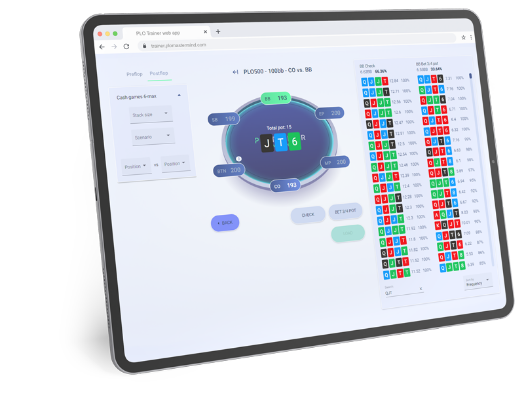Pre-flop is probably the most important street in any community card poker game. This is the one street you play every single hand, regardless of whether you fold, call, or raise. If you play your hand, your decision impacts all decisions moving forward. Despite this, many players make critical pre-flop PLO mistakes when they play. These small mistakes add up to large amounts of money lost over time.
This article is the second in a three-part series covering some of the biggest mistakes players often make in PLO. If you missed it, make sure to take a look at the first article in this series, “Fix These PLO Mistakes and Make More Money.”
Table of Contents
Pre-Flop PLO Mistake #1: Players Limp Too Much
At most PLO tables, you see many players open-limping and over-limping. Often, these players end up playing a bigger pot out of position after calling an isolation raise from a stronger player. There are several reasons to avoid making this mistake.
You Don’t Force Your Opponents to Make a Mistake
You make money in poker through your opponent’s mistakes. If we do not force our opponents to make mistakes, we will not make as much money in the long run. When you limp preflop, the Big Blind is not forced to make a decision, and as a result, they make a mistake with hands that they should fold against raise.
You Cannot Pick Up the Blinds Pre-Flop
When you limp in pre-flop, even if everyone else folds, you’re still going to see a flop. You have forgone your ability to pick up 1.5 big blinds uncontested. You have also given the Big Blind the chance to realize his equity on his weakest hands that he would have folded. This is a huge win for the Big Blind, who is now making money from your mistakes.
You Encourage a Multiway Pot
When you limp, it tends to be followed by several players over-limping. You end up playing a multi-way pot out of position. As more players enter the pot, even the strongest hands lose equity.
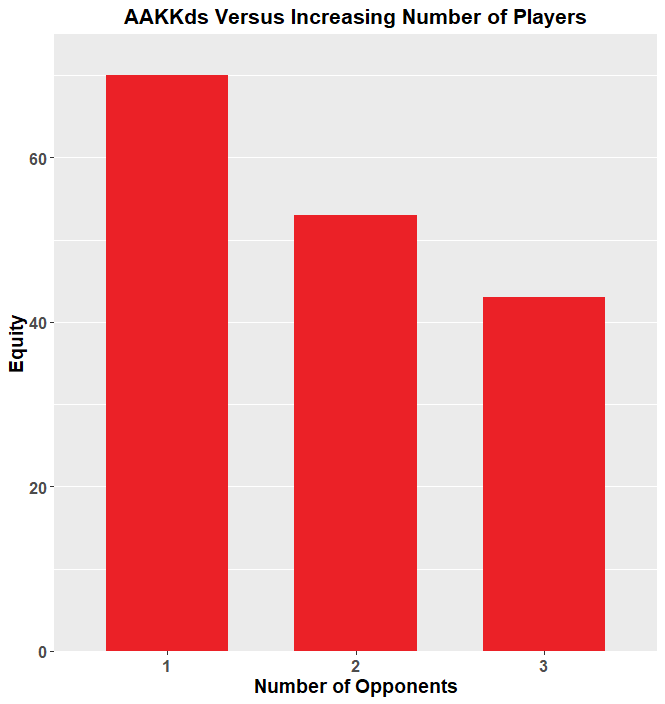
A hand like AAKKds has 70% equity versus a player playing their top 40% of hands. Versus two players it shrinks to around 53%. That’s a whopping 17% reduction in equity. Add in the Big Blind, who gets to see a flop for free, and you drop another 10% to 43% equity.
Keep in mind that we will realize less equity out of position, so this reduction in equity is often more than what the numbers tell us. Do yourself a favor and strike this mistake from your playbook. If you are going to enter an unraised pot, do it for a raise.
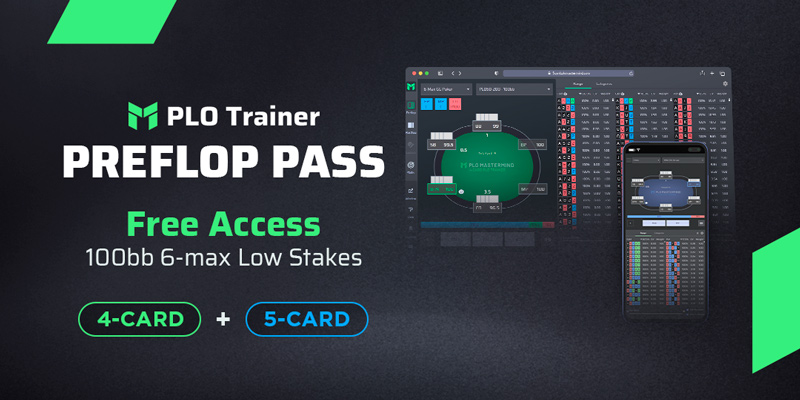
Pre-Flop PLO Mistake #2: Players Don’t Raise Full Pot
This mistake is very common among players switching from No-Limit Texas Holdem. In Holdem, it is common to see raises preflop ranging from a min-raise to three times the big blind. In PLO, we prefer making a pot-size raise. There are two good reasons for this.
It Increases Your Equity Realization Post-Flop
Equity realization is the amount of value a player makes compared to their equity share of the pot. Given a 10 big blind pot, a player with 60% equity has a 6 big blind share of the pot. If they win 7 big blinds on average, their equity realization is 116.6%. If they win 5 big blinds on average, their equity realization is 83.3%.
In No-Limit Texas Holdem, players can realize more equity post-flop by utilizing larger-than-pot-size bets. In PLO, you are limited to pot-size bets. To realize the most equity post-flop, we need to create a larger pot pre-flop than we do in Holdem. Assuming your opponent has a full 100 big blind stack, in PLO, it is impossible to win their entire stack with anything less than a pot-size raise pre-flop.
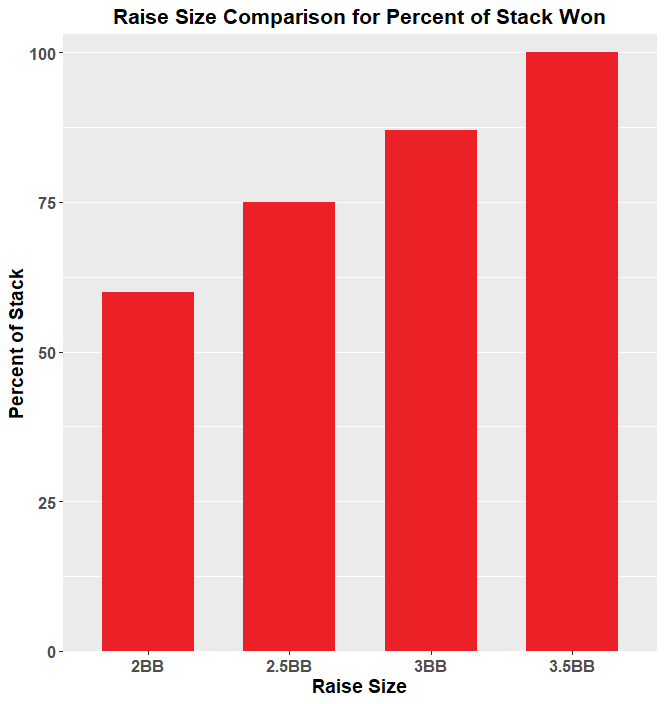
Let’s take a quick look at various pre-flop raise sizes, assuming everyone folds and the Big Blind calls. With a min-raise preflop followed by pot-size bets on all streets post-flop, you can only win around 60% of your opponent’s stack. With a 2.5 big blind raise, you can only win around 75%. At 3 big blinds, you are winning around 87%. It’s not until you make a pot-size raise of 3.5 big blinds that you can stack our opponent.
You Give Your Opponent Worse Equity on a Call
In our first article of the series, we discussed how close equities run in PLO and noted how these equities often get closer post-flop. As our raise size gets smaller pre-flop, we allow our opponents to correctly play more hands against us.
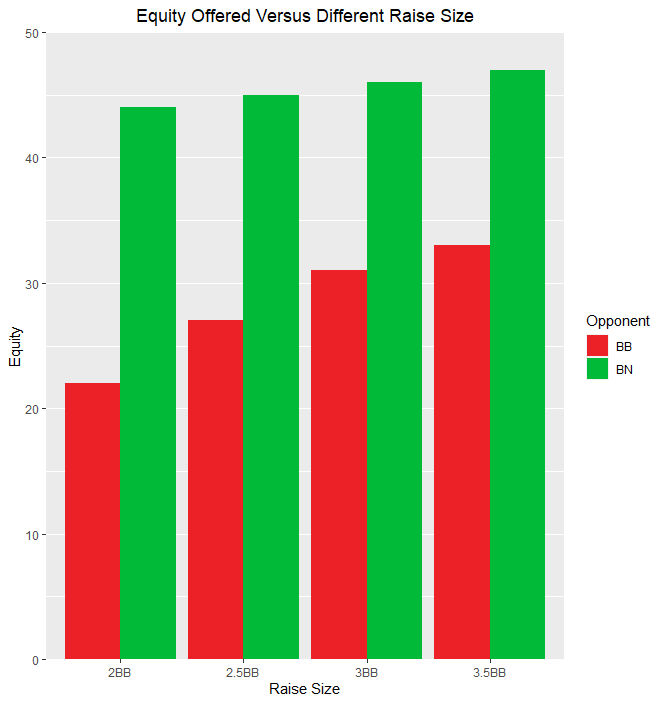
Looking back at our previous example of raise sizes, our opponent in the big blind is offered 22%, 27%, 31%, and 33% on calling versus a 2, 2.5, 3, and 3.5 big blind raise, respectively. If we look at a player outside the blinds, these percentages jump to 44%, 45%, 46%, and 47% respectively.
This is an easy adjustment to increase your win rate in PLO. When you are raising pre-flop, make it a full pot-size bet.
Pre-Flop PLO Mistake #3: Players Play Too Many Hands Pre-Flop
It is easy for players to justify playing a lot of hands to themselves. You often hear, “I am getting such good odds, and equities are close in PLO,” or “I have six hands to hit the flop” from these players. While true, that does not justify playing almost any four cards.
It might surprise you that the optimal preflop frequencies for raise-first-in in PLO are not much wider than No-Limit Texas Holdem frequencies. The first three positions in a six-max game barely see an increase in frequency. It’s not until the Button that you see a significant increase in raise-first-in frequencies compared to Holdem.
Some players understand this; however, they still make critical mistakes. Why is this? They do not have a solid framework for understanding PLO preflop hand categories like they do in Texas Holdem. In Holdem, most players are familiar with the 13×13 matrix. Given the two-card construct that has 169 strategically different hands, this kind of visualization is easy to depict in a two-dimensional matrix.
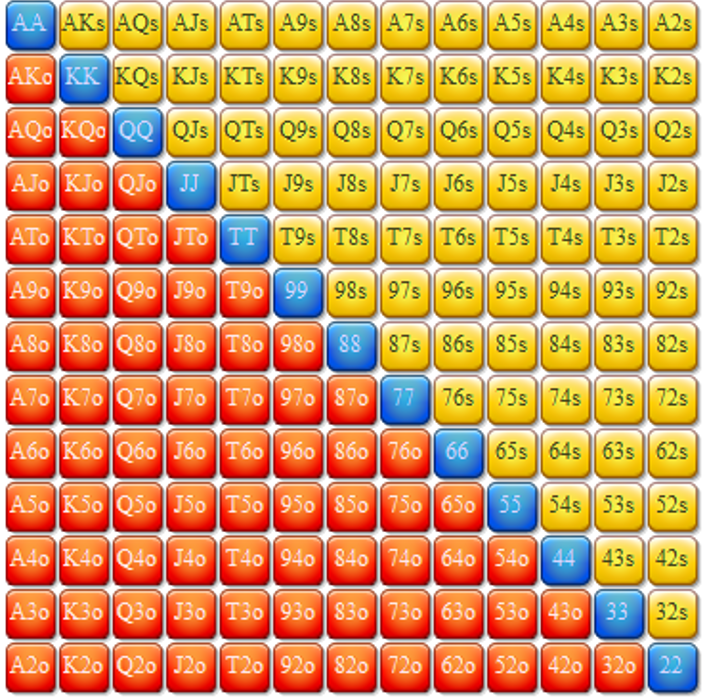
This is not easy to visualize in a clean format in PLO. Aside from the 6 different 2-card combinations, there are 16,432 strategically different starting hands in PLO. While there is likely no way anyone could memorize the optimal opening ranges like you could do in No-Limit Texas Holdem, you can work to get very close by grouping hands into categories and looking at what makes up the bottom end of that range.
This requires a lot of off-table work and good tools to help you understand ranges. Many free tools are available. If you want to get a solid understanding of range makeups, check out PokerStrategy.com’s free equity calculator Equilab – Omaha. You can look at equity graphs, combo counts, hand rankings, and much more for free.
While working through equity calculations and developing your ranges is good for development, it can take some time and can introduce mistakes. If you want to eliminate preflop mistakes, you need something that takes all the guesswork out of it.
My friends over at PLO Mastermind have developed a cutting-edge PLO Trainer that you can quickly eliminate pre-flop mistakes by using their PLO Trainer’s free Pre-Flop Pass. This tool shows what hands to play from what position, groups them into categories, shows you the expected value of the hand, and lets you take the ranges to the trainer to drill them over and over.
There is no faster way to improve your pre-flop game, and it’s 100% free.

Eliminating pre-flop mistakes takes time and hard work; however, it is worth the investment. You would not build a house on a bad foundation. When you neglect your pre-flop game, that is exactly what you do. You are building a strategy on a bad foundation. This ultimately cascades into many post-flop mistakes.
In our next post “Fix These Post-Flop PLO Mistakes and Make More Money,” we will cover those mistakes more in-depth.
If you enjoyed this article, make sure to subscribe or follow me on Twitter to stay up to date on new content. Also, check out some of my other articles below.

